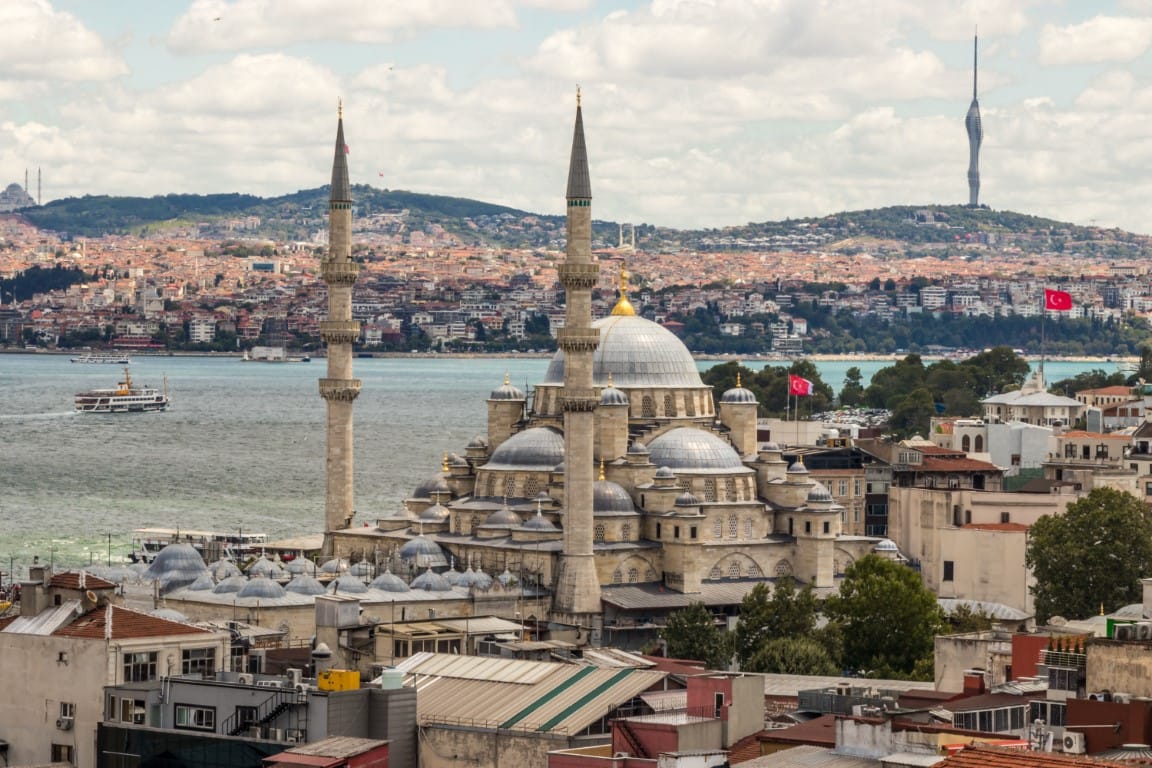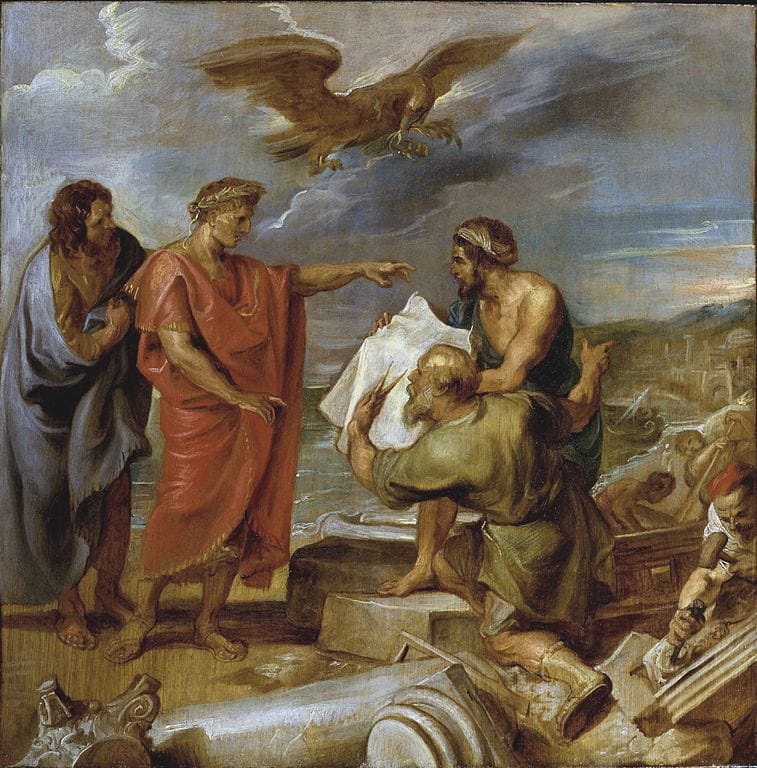Weekend Special: Istanbul
One of the worlds greatest cities, from many different perspectives

For this weekend special, we dive into one of the world's great cities—and the one I grew up in: Istanbul. According to official numbers, it is home to more than 15 million people today. It's one of the most important cities in history. Last year, in 2023, it was the most visited city in the world.
I wanted to start with a brief and accessible history of the city, but that is not an easy feat. You could spend the rest of your life studying that and still come up short. Moreover, new discoveries are still being made: Very recently, in 2008, new archeological evidence (found while building a subway station) dates the earliest known settlement in the area to 6700 BC.
With that, the History of Istanbul Wikipedia article provides an excellent introduction. You could dive into any of the references or the further reading list if something particularly strikes your fancy. I also have a few selections that capture the city at different historical periods.
This blog post shows how important the flow of goods, ideals, and people through Constantinople was in sustaining the Silk Road system during the late, particularly in the Antique and early medieval periods. If you would like to go back in time, this entry from BBC's h2g2 provides a good introduction to how Constantinople was founded by Constantine the Great.

This article, originally published in History Today, tells the story of the Byzantine capital's final moments. I also highly recommend listening to this episode of the excellent podcast Tides of History by Patrick Wyman.
If you are bored enough with straightforward history, let's dive into two excellent articles by Elif Batuman in The New Yorker. They both deal not only with the history of Istanbul but with their political and ideological repercussions today. In The Big Dig she explores the rich history of the city through the story of one dig site and how they are connected to modern ideologies.
Still, Tansev had been relieved when the excavation reached the seafloor, and felt only mild discomfiture when the archeologists asked to perform a further five-square-metre test excavation: what could they possibly find under the seafloor? When the archeologists called him fifteen days later to say that they had found Neolithic traces, Tansev thought they were joking. “What are the chances?” he marvelled. “In a hundred-thousand-square-metre area, you excavate twenty-five square metres, and then you find something! It’s unheard of! Well, then they explained it to me. Under the seabed, there’s a dark, hard, oily clay. Past that, there’s tar. Under that, what they found was some kind of cultivated topsoil. There were seeds planted in it.”
The second article by Batuman, Ottomania, is a bit more meta. It's about a very popular TV show depicting palace life during the reign of Süleyman the Magnificent, widely considered the peak of the Ottoman Empire. I highly recommend reading this; it packs so much into one article: the political backlash against it, how history is taught in schools, the challenges of writing historical fiction, and national identity.
When I asked the brothers how Ottoman history was taught when they were children, Yağmur replied, “In a schizophrenic fashion.” On the one hand, they had learned to take pride in their glorious history. On the other hand, he said, “there are fathers murdering their sons, and foreign, non-Turkish women infiltrating the state.” This tension is illustrated with particular starkness in the life of Süleyman. “Süleyman epitomized justice, he valued justice over all things, and his rule was the Ottoman Golden Age,” Yağmur said. “But he killed his best friend, and he killed his own son.”
Istanbul today is a very different city than we have seen in these histories so far, and it is still changing rapidly, just like the entire country. A foreigner with a keen eye visiting the city at multiple points in time might be the best to observe this. Cassim Shepard, an urban planner, does exactly that. His piece, Istanbul: History Unfolds in the Capital of a Long-Gone Empire is worth reading.
Another article chronicling this modern change is Returning to Istanbul, a Place of Competing Identities by Aatish Taseer, published in The New York Times. As he returns to Istanbul after 15 years, he bears witness to the rise of Islamism and authoritarianism in Turkey under Erdogan, in contrast with the secular Kemalist legacy he had experienced earlier. Interwoven with his personal story and identity, this is a beautiful read.
The Bosporus dramatized dualities. It did not resolve them. Here, one lived in a state of cultural whiplash. The perturbation one felt in Istanbul came from having to carry the city’s myriad selves in mind at once. Protean city! It could change on a dime, and one had to be ready to change with it, as the city itself had so many times through history. . .
Istanbul also inspired many authors, one of the most important being Orhan Pamuk, an Istanbul resident himself. This essay in The New York Times, "The Changing Colors of Istanbul," is adapted from his book Orange, a book of Istanbul photographs accompanied by the words of a literary master. This is as good a segue as any, leaving the written word behind for a little while and discovering the Turkish photographer Ara Güler. His website has two sections dedicated to Istanbul: One with black and white photos and another with color. This is a good place to lose yourself for a couple of hours.
If you would like to read more (a lot more) about how Istanbul has influenced other authors, Ayse Naz Bulamur's book How Istanbul's Cultural Complexities Have Shaped Eight Contemporary Novelists: Tales of Istanbul in Contemporary Fiction is available for free on academia.edu. It is well worth taking a look at.
Another famous author who has passed through Istanbul is Hemingway, who covered the Greek-Turkish war in 1922 for the Toronto Star. One example of his articles published during his time in Istanbul is "Constantinople, Dirty and White, Not Glistening and Sinister." Quite a few more are available on the same website in the archive page dedicated to him. If you would like to have more context on this period of his writing and the circumstances surrounding them, I highly recommend this research article by Naza Maksudyan, published in the Journal of European Studies. This period is critical to the formation of modern Türkiye, and it came with a huge human cost, which Hemingway aptly observed.
Moving on to a more lighthearted topic, at least if you are not a die-hard fan, is football. Anyone who visited Istanbul can observe how football is a big part of life here. Istanbul is home to the three largest clubs in the country: Beşiktaş, Fenerbahçe, and Galatasaray. Of those, the games between the latter two are the most important fixtures of the year. The article "The Istanbul Derby" on SBNation is an incredibly fun read and a good account of the city and its fandom.
At no point in any map of the city does it depict the moment you stumble and grab hold of that live wire of human emotion: the bent of the faithful at a mosque, the sizzling anger of a crowd with its eyes fixed on the beetle-like forms of riot police, the profanity of soccer fans shaking their fists in a particular way and demanding blood in exchange for their love.
This would have been a good place to wrap this up, but when we mention Istanbul, there is one more thing that needs to be discussed: the food. Articles, videos, books, and documentaries about food are a dime a dozen when it comes to Istanbul, but I have one to recommend: another article from Elif Batuman in The New Yorker: The Memory Kitchen. It tells the story of the restaurant Çiya Sofrasi and its owner Musa Dağdeviren, a scholar of Turkish food. He travels all over the country to record the local recipes, as they are cooked by older generations. Thesre recipes are what he cooks at his restaurant. It's a must-visit if you happen to be in Istanbul one day, and this article is the perfect introduction to it.
The moral of his story was that “the moment you say, ‘Hey, let’s revive this’—no matter what it is—it’s finished.” This is exactly the paradox that Çiya has avoided. “The people’s” lost food is rescued not only from disappearance or mechanization but also from foodie fetishism. The restaurant is an ark in which every tiny species is salvaged, represented, preserved—but still alive, changing, and growing.




